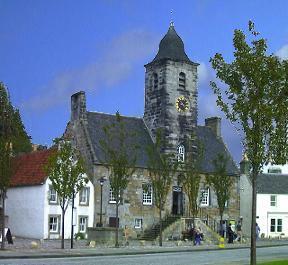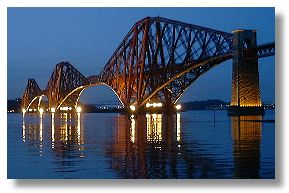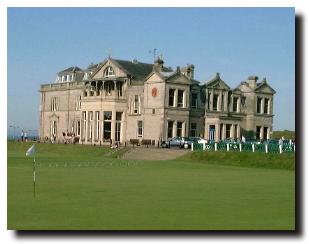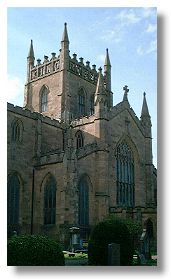
Although Fife is often referred to as the "Kingdom" it was probably never a true kingdom, although there are claims that it was a kingdom of one of the tribes of the Picts and certainly at one time Dunfermline was a royal residence. But its title derives more from the insular nature of the county, surrounded as it is by the Tay estuary to the north, the Forth estuary to the south and the North Sea to the east. The separate nature of the county is increased by the Ochil Hills to the west. With a coastline of 115 miles, Fife is 41 miles long and only 22 miles wide at maximum.
 Tourist Guide to Fife is an illustrated guide with places to visit, maps, events, activities, visitor information, accommodation and eating out. There is a also a golf and fishing guide and a number of 360 degree panoramas. A number of locations are covered by a brief description, a map and local places of interest, such as St Andrews and Dunfermline - and the famous Forth Bridge at the southern end of the county.
Tourist Guide to Fife is an illustrated guide with places to visit, maps, events, activities, visitor information, accommodation and eating out. There is a also a golf and fishing guide and a number of 360 degree panoramas. A number of locations are covered by a brief description, a map and local places of interest, such as St Andrews and Dunfermline - and the famous Forth Bridge at the southern end of the county.
Perhaps the most interesting Web site covering the whole county is The Fife Post. Aimed particularly at the genealogist, it has a map showing the parishes of Fife (with their meaning and pronounciations). The site also covers Origins and History of Wemyss Caves with a very well illustrated set of pages.
 No visit to Fife would be complete without taking in St Andrews, the home of golf. The R & A - the Royal and Ancient Golf Club is the world governing body for golf and you can read the definitive Rules of Golf on their Web site. If you want to play golf elsewhere in the county, there is a List of Golf Courses in Fife.
No visit to Fife would be complete without taking in St Andrews, the home of golf. The R & A - the Royal and Ancient Golf Club is the world governing body for golf and you can read the definitive Rules of Golf on their Web site. If you want to play golf elsewhere in the county, there is a List of Golf Courses in Fife.
St Andrews also has the oldest University in Scotland, which obtained its charter in 1412. The burgh also has a Castle and the remains of a magnificent Cathedral.
 Dunfermline has claims to be one of the ancient capitals of Scotland and Robert the Bruce is buried in Dunfermline Abbey (minus his heart which is in a lead casket buried at Melrose Abbey). In more recent times, Andrew Carnegie was born in the town before emigrating to USA to become a steel magnate and philanthropist.
Dunfermline has claims to be one of the ancient capitals of Scotland and Robert the Bruce is buried in Dunfermline Abbey (minus his heart which is in a lead casket buried at Melrose Abbey). In more recent times, Andrew Carnegie was born in the town before emigrating to USA to become a steel magnate and philanthropist.
Aberdour has an attractive castle and next door is St Fillan's church.
There are National Trust for Scotland properties at Hill of Tarvit Mansion & Garden and the Royal Palace at Falkland. Another National Trust property worth a look is Kellie Castle & Garden. Other castles in Fife include Ravenscraig and Kilconquhar as well as Balgonie.
If you want a change from towns, villages and scenery, then why not pay a visit to the Secret Bunker located between Crail and St Andrews? Until recently it was Scotland's best kept secret since it was an underground command bunker which was only taken off the Official Secrets list in 1993. Then, with the Cold War at an end, in 1997 it was opened up as a tourist attraction. The web site illustrates how government would have continued if nuclear war had broken out. If you linger long enough on the first page you will allow the sound file of an air-raid warning to download!
Making the most of its coastal location Deep Sea World at North Queensferry has rapidly become one of Scotland's most popular tourist attractions. The Web site gives a taste of what is in store with colourful pages of information not just about the facilities but also about the fish to be seen there, links to other aquaria resources and competitions for school children.
Further along the southern coast of Fife along the irth of Forth is the picturesque town of Culross. Much of the town is owned by the National Trust for Scotland and many of the ordinary buildings as well as the grander ones have been preserved.



